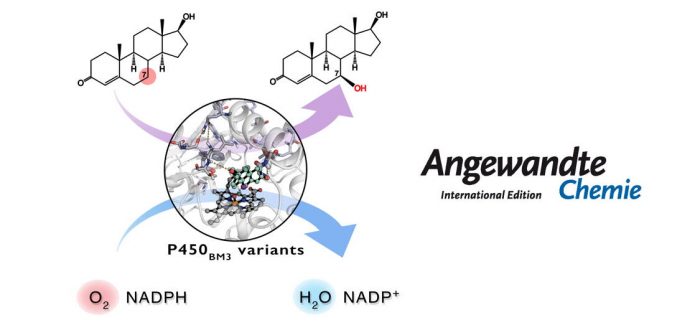Steroidal C7beta alcohols and their respective esters have shown significant promise as neuroprotective and anti-inflammatory agents to treat chronic neuronal damage like stroke, brain trauma and cerebral ischemia. Since position C7 is spatially far away from any functional groups that could direct C–H activation, these transformations are not readily possible using modern synthetic organic techniques. We report P450-BM3 mutants that catalyze the oxidative hydroxylation of six different steroids with pronounced C7-regio- and beta-stereoselectivity as well as high activity. These challenging transformations were achieved by a focused mutagenesis strategy and application of a novel technology for protein library construction based on DNA assembly and USER (Uracil-Specific Excision Reagent) cloning. Upscaling reactions enabled the purification of the respective steroidal alcohols in moderate to excellent yields. The high-resolution X-ray structure and molecular dynamics simulations of the best mutant unveil the origin of regio- and stereoselectivity.
The paper by Lorenzo D’Amore, Marc Garcia-Borràs, Sílvia Osuna and co-workers appeared online recently in Angewandte Chemie-International Edition:
A. Li, C.G. Acevedo-Rocha, L. D’Amore, J. Chen, Y. Peng, M. Garcia-Borràs, C. Gao, J. Zhu, H. Rickerby, S. Osuna, J. Zhou, and M.T. Reetz
“Regio- and Stereoselective Steroid Hydroxylation at the C7-Position by Cytochrome P450 Monooxygenase Mutants”
Angew. Chem. Int. Ed. 2020, [], ASAP-
DOI: 10.1002/anie.202003139

